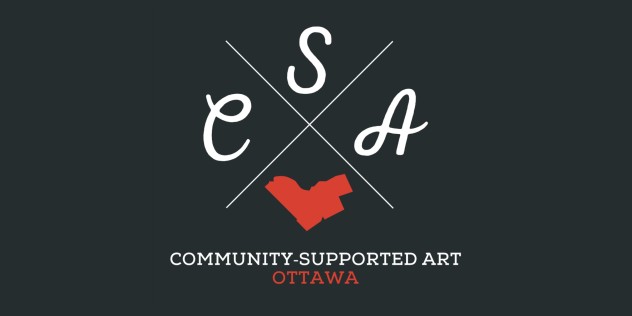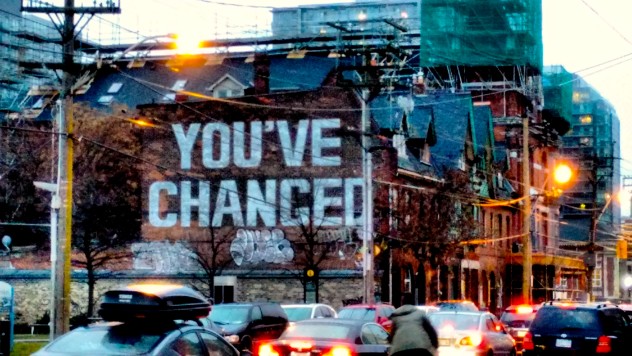
(*Disclaimer: Issues of diversity, specifically the importance of having a diversity of voices in critical response, don’t even get touched on in this piece. I also don’t get really get into a discussion of biases. Lots to write/talk about on another day!)
In April the Ottawa Storytellers and Counterpoint Players hosted a “Theatre Matters” panel discussion on the subject of “Critical Response to Theatre in Ottawa”. Geek that I am, I was thrilled to attend this panel. For the few weeks leading up to the event, I had been passionately writing a piece on theatre criticism in Ottawa, and really felt (and still feel) it to be a subject that our community needed to tackle together.
During the panel, my thoughts on theatre criticism in Ottawa completely changed.
Before the panel, the blog I was writing was a call to arms. I was frustrated by the lack of excellence in Ottawa theatre criticism, and felt it was impeding our ability to create excellent work. I felt, and still feel, that there is no one critic in Ottawa who I can trust to give a pointed, balanced, honest review of the work while at the same time urging our theatre towards a higher vision. I was, and am, frustrated with how our work is portrayed to the general public, and frustrated with reviewers speaking with an unquestionable and unquestioning voice of authority, without declaring biases. My before-panel blog posited that for the sake of our ever-growing Ottawa theatre community, we needed to demand better reviewers, come to an understanding of what a review should do, and set a better standard for our art.
At the panel, I realized my idealism was out of focus. Or perhaps, my idealism belonged to times past. While excellence in theatre criticism is needed, theatre criticism in general is less and less supported. As Patrick Langston, arts reviewer for the Ottawa Citizen, said at the panel: “Make no mistake. The days of newspaper theatre reviews in Canada are over.” Journalistic or otherwise, corporations aren’t going to pay for what isn’t bringing in revenue –and guess what, theatre reviews aren’t bringing in revenue. The result is less funding to pay professional critics. And even for the paid critics who do exist (Paid Ottawa Theatre Critic population: 1) the days of happening upon reviews while flipping through the Arts section are over, too. Readers simply click on the news they want to read without needing to skim over the rest. Those that click on theatre reviews and articles are those who are already invested in the work.
Critical response to theatre, then, is changing. These factors mean that traditional reviews don’t mean as much as they used to. Artists and producers can still use reviews as publicity, cutting out quotes to plaster on Facebook and Twitter, but the likelihood of meaningful response to the work in traditional reviewing models is slim, especially in mid-sized Canadian cities like Ottawa.
It’s time for new models.
There are two ways that traditional reviews at their best contribute to the theatre ecosystem: artistic feedback for the betterment of the form, and audience engagement. We have to find ways to fulfill those two elements in a time when the traditional review is dying. So how are we going to do that?
Artistic Feedback
Artists spend their time before a production becoming more and more engrossed in their creation process. They put the creation out into the world, and then they need to hear back from the audience about how their work is perceived. The process isn’t complete without that closing of the loop. As discussed, right now in Ottawa we get some feedback from reviewers via the traditional media channels and amateur blogs, but it isn’t enough to push us as artists into better expressions of our work. Here are some ideas of ways forward:
- Increasing artist and critic engagement. Right now we are working in an old system where the critic has the final word. They see a piece, write a review, and it is considered bad taste if artists challenge the review in any way –and they hardly dare speak up for fear of losing future coverage. This critic privilege leads to celebrated critics like Jamie Portman writing reviews like this one after walking out of a show in the first 10 minutes. Thankfully, this entitled ‘review’ was challenged by the New Ottawa Critics here. The New Ottawa Critics, while young and less experienced, give me hope that there can be more meaningful dialogue between critics and artists. Look at Brie McFarlane, founder of NOC, and her retrospective of this year’s fringe. She actually wants to stick around the Fringe tent to engage with artists in order to get a better understanding of the work, and allows that understanding to inform her reviews. Even better, earlier this year Brie and the Fresh Meat Festival producers conducted an ‘embedded critic’ experiment as a part of their Weekend Inventive. As an artist community, we should support and encourage this kind of dialogue, especially when there is work being done on all sides to learn from each other.
- Consider new ways of interacting with each other’s work. At the panel, Associate Artistic Director of the NAC, Sarah Stanley, brought up a fantastic example of artist-to-artist engagement in Daniel Karasik, Toronto-based playwright and blogger. Karasik writes long, well-articulated and personal letters to theatre creators about their plays. Far from your typical review, Karasik is candid, declares his biases regularly, and compassionately reaches out to his colleagues in a desire to see better work. (If you have time, check out Erin Brubacher’s letter to him about his most recent play, followed by his response. Now this is a compelling dialogue about theatre!) Can we react to each others’ work more like this, and take it a step further by having the audience do so as well?
- Feedback Circles: I’m curious about how we can get artistic feedback from fellow artists beyond the typical bar conversations with colleagues who may be too kind to us. There is a place for getting feedback from trusted friends and advisors, and I get that sometimes artists may not want or may not be ready for anything more structured. But for those of us looking for some well-considered feedback from a diversity of voices, maybe the answer is creating feedback circles; some sort of group to whom we could submit our plays for a feedback meeting, and where we could give feedback for other people’s plays. I know, I know —another volunteer-based theatre initiative, do we really have time for this? I think yes, because let’s face it, we love talking about other people’s plays.
Audience Engagement
In addition to providing feedback to the artists, theatre reviews have been a traditional method of audience engagement, creating a public dialogue with the work. We’re at a time when interest in theatre is low, as is engagement with traditional journalistic forms. So how do we fill this growing gap in engaging audiences? Some ideas on ways forward:
- Really asking ourselves, who is this for? Theatre is meant to be a direct art form; personal; up-front. Engagement with the audience is built into its very fabric. So we need to ask ourselves who we are creating it for and then be really hard on ourselves when figuring out the answer. If it’s for the recognition of our theatre colleagues, well… I guess that serves a career purpose. If it’s catering to a largely older segment of the population who are devoted to traditional theatre, there is a place for those shows but I would argue that we produce too many of them each year. When the theatre community at large is struggling with getting people in the door, we should all be striving to create something immediate and relevant for our audiences. Audience engagement isn’t an optional tag-on to your show where you maybe do a talk-back. Audience engagement should be the reason we do the work in the first place, and it should be built into the work itself.
- If we don’t know who the work is for, we need to find out. This is where is gets personal. As artists and as people, who do we know in our greater communities? Do we brush shoulders with people who are poor, people who are rich, people of different cultures, children, youth, seniors, people with disabilities? And do we engage with them with enough curiosity and compassion to know what matters to them? If not, how can we create for them?
- Business-to-business partnership: private partnerships are all the rage these days, and this is an area where we can take more practical action. Selling advertising space makes some money, but doesn’t necessarily spread the word. Restaurant partnerships are useful, if a bit old hat –what about spicing them up? My friend and fellow playwright Johnny Wideman has started a partnership in his town called “Full-Bodied Short Stories”, where he pairs his stories with wine and food offerings from local establishments. Or what about using business space during off-hours as a means of co-promotion, like Tale of a Town Ottawa, or how about bartering workshop facilitation for ticket sales?
These are some ideas to contribute to the greater conversation we are having about audience engagement. I know this doesn’t begin to encompass all of the issues and tasks at hand –site-engaged theatre, community-engaged arts, and audience participation, to name a few. But I bring this up because it is tied to the fact that critic engagement of the audience is ever-shrinking. And as it shrinks, the question of what to do next becomes more urgent.
Moving Forward
Of course we should continue to support the existence of traditional reviewers, and I hope we challenge them to be excellent in their criticism. They still provide a valuable sounding board for our theatre and they have the power to challenge us to become better. I do hope that newspapers will support theatre critics for years to come. I also hope that blogs will continue to fill the gap left by traditional media, and strive for high-quality art journalism –though it’s a lot to ask from writers working for free.
But the times of depending on theatre critics as our main feedback and public engagement agents are over. It’s time to jump to new forms of theatre response. If anyone wants to start a Feedback Circle, let’s talk.



